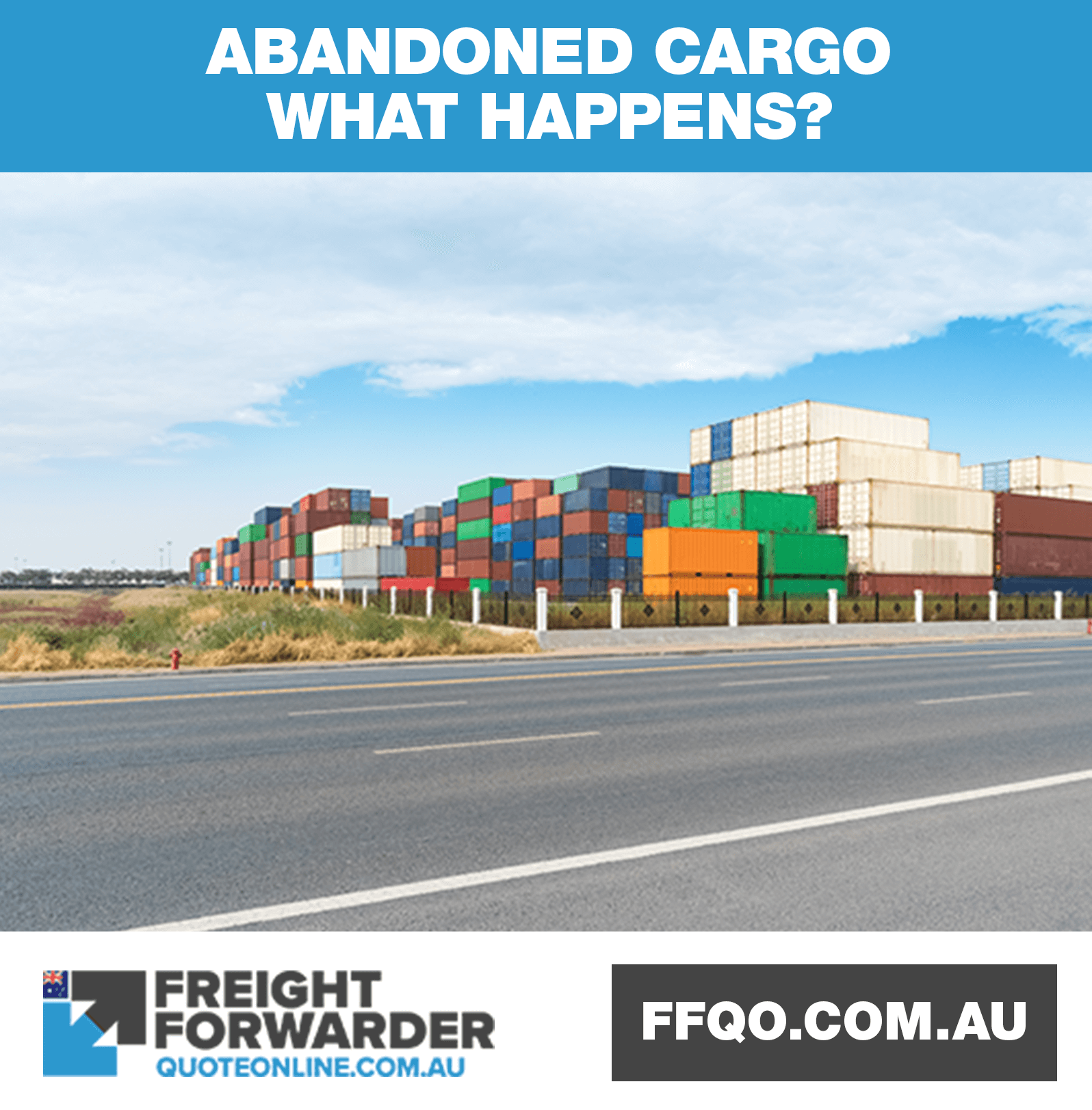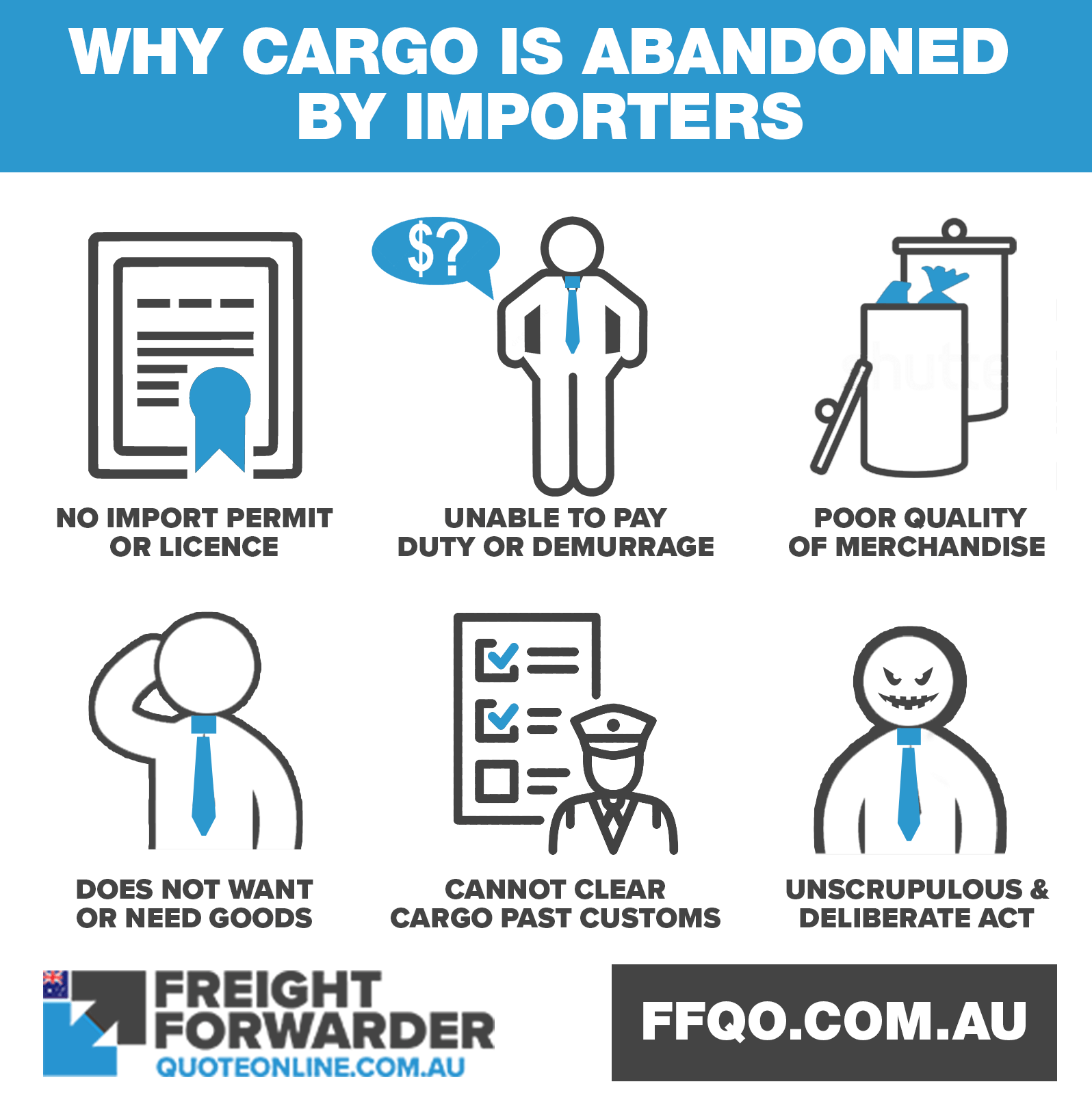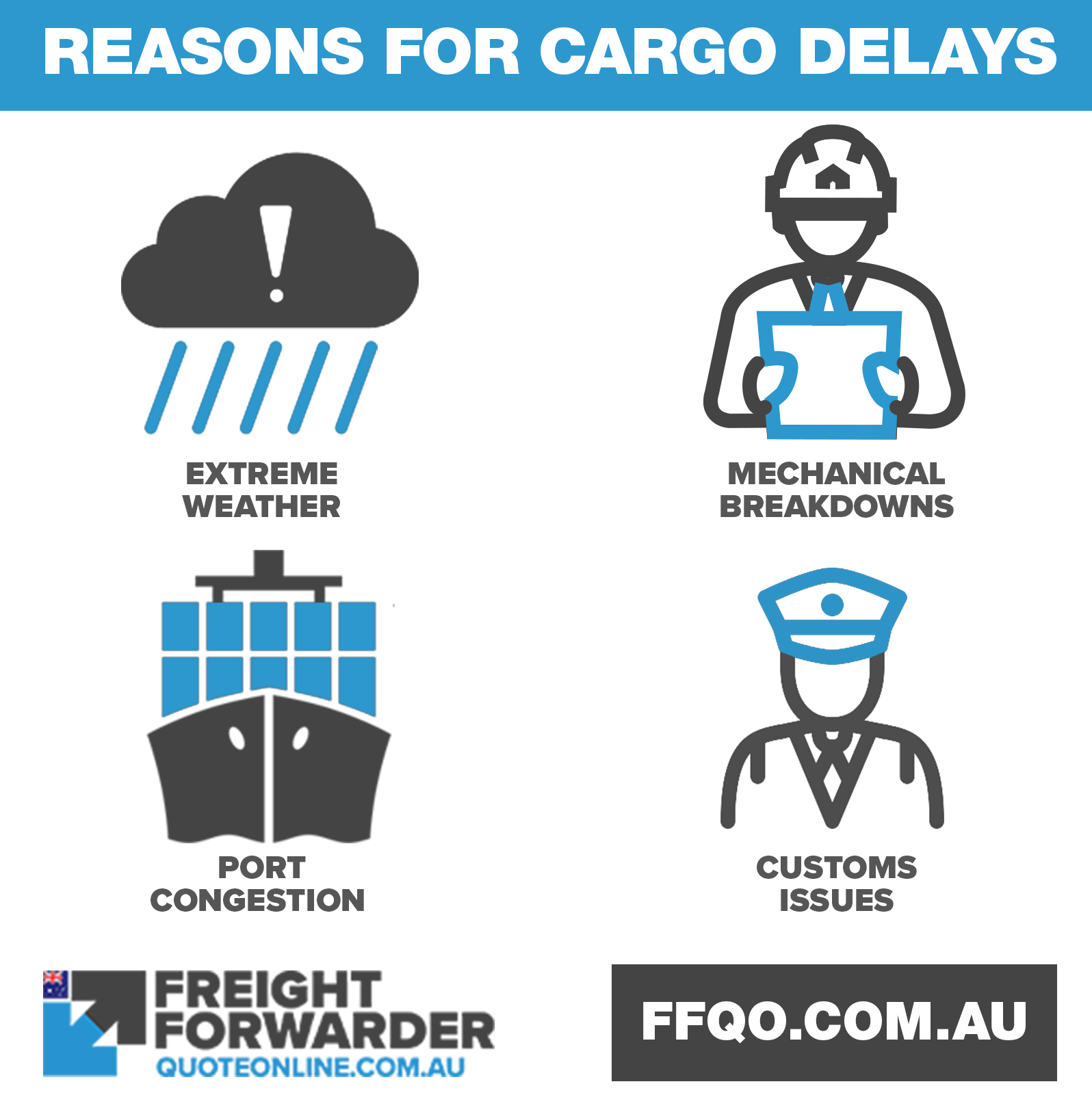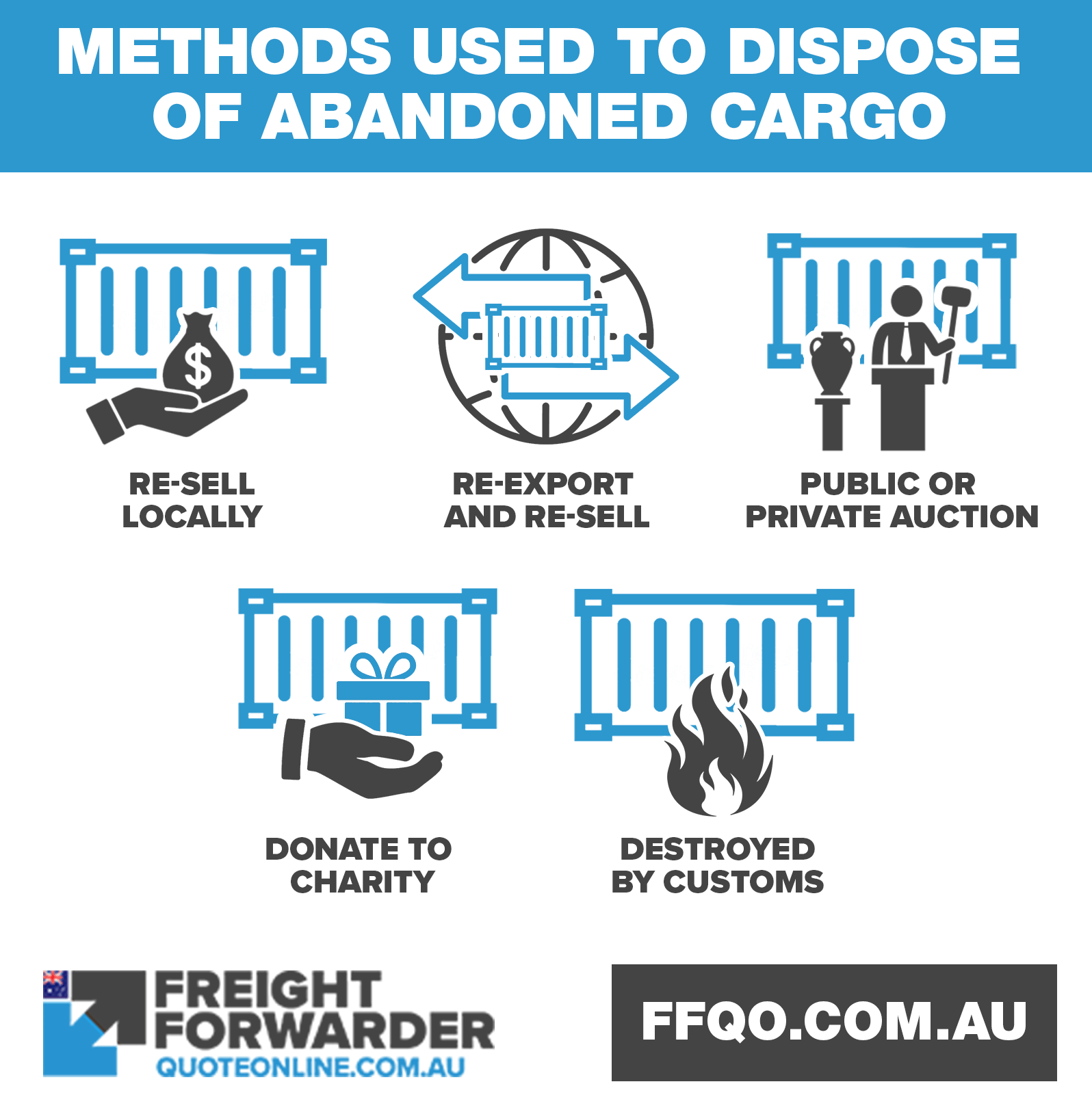Home » News »
Abandoned cargo – what happens to goods not collected by importers?
« Previous | Next »
Each year huge numbers of laden shipping containers with abandoned cargo sit in ports uncollected. One reason could be that an importer may no longer be in business. Other reasons may be some variation or disagreement about the amount or quality of the goods. In some instances, changes to import regulations may mean the goods are now banned, therefore no longer acceptable in the country. What happens to all this abandoned cargo?
 Abandoned cargo – what happens when goods are not collected by the importer?
Abandoned cargo – what happens when goods are not collected by the importer?
How is abandoned cargo defined?
The Federation of Freight Forwarders Association (FIATA) defines abandoned cargo as “cargo which the consignee (importer) has manifested no intention to take delivery of after a reasonable period”. This also encompasses instances in which the importer can’t be determined or contacted.
What is a reasonable period?
The meaning of ‘reasonable period’ changes from country to country. In some – India, for instance – merchandise is deemed ‘abandoned’ if not claimed within 30 days. Elsewhere, this 30-day period may extend for as long as 90 days.
Problem for freight forwarder
Shipping containers holding goods can’t be left at a port indefinitely. Such containers turn into a major problem for the freight forwarder, and a solution must be found. In instances where cargo is not collected, the freight forwarder is entitled to:
- Remove the shipping container’s contents
- Move the cargo to a bonded store
- Sell the importer’s uncollected goods
- Utilise monies realised from selling the goods to cover expenses
- Institute legal proceedings to redress any remaining losses
Why is cargo abandoned?
Importers may leave cargo uncollected for various reasons, including:
- Lacking the appropriate import permit or licence
- Cannot afford import duty or demurrage costs
- Is not happy with the quality of the merchandise
- No longer wants or requires the goods
- Is not able to clear the cargo
Another possible reason is the importer believing the cargo has suffered some damage, or perhaps there may have been a disagreement with the freight forwarder.
Pandemic increased abandoned cargo
The maritime industry has been brought to its knees by the pandemic. Stringent lockdowns were imposed in many countries worldwide. This meant cargo could not easily be moved, and this led to increasing numbers of cancellations. Further, worker scarcity and expanded border management resulted in unprecedented port congestion.
The pandemic wreaked havoc on importers. Some importers had to rescind orders for products already dockside awaiting shipment, because the goods were no longer saleable. Others had commodities with limited longevity spoil from the extended delays in shipping.
Unscrupulous importers
The abandonment of cargo can sometimes be deliberate. Some importers resort to this as a means of disposal of valueless material. This can include scrap metal or plastic and discarded electronic or electric equipment.
 Why cargo is abandoned by importers
Why cargo is abandoned by importers
Who is liable for abandoned cargo?
The freight forwarder generally has liability for abandoned cargo. If the consignment is not cleared by the importer and the Bill of Entry has not been completed, the cargo is deemed abandoned.
The Bill of Entry is a formal declaration that must be filed in order for cargo to clear customs. This document has a narrow window of opportunity during which it must be completed. It is incumbent upon the importer to follow up on the consignment’s progress through customs. Should the importer not complete all requisite import clearance formalities within the required timeframe, the goods are arbitrarily declared uncleared or abandoned. Goods rejected from customs clearance are then released back into the custody of the freight forwarder.
Who pays for the storage of the abandoned cargo?
The freight forwarder must apprise both importer and seller of any logistical hold ups so adverse effects and financial penalties can be kept to a minimum. Further, the importer must be advised that the goods can be cleared. This ensures storage costs (demurrage) do not start accruing when the consignment reaches customs.
Should the vessel be delayed in port or the cargo held up in customs beyond the allotted free cargo storage time, the freight forwarder is responsible for the costs of demurrage. The freight forwarder must then pass the demurrage charges on to the importer.
What are the reasons for cargo delays?
There are a number of reasons why goods may take longer than expected to ship. These include:
- Extreme weather conditions
- Mechanical breakdowns
- Customs issues
- Port congestion
Force majeure to avoid the storage fees
The longer the cargo remains in storage the higher the demurrage costs. The freight forwarder usually has in place a force majeure clause covering unexpected circumstances. This clause can be invoked to stop demands for the freight forwarder to cover growing demurrage costs. A freight forwarder, knowing the importer would not be willing to cover the demurrage fees, can then use force majeure to just walk away from the shipping container.
 What are the reasons for cargo delays?
What are the reasons for cargo delays?
What methods can be used to dispose of abandoned cargo?
Should a laden shipping container be abandoned, the freight forwarder can choose to put the cargo up for sale to equalise or reduce monetary loss. Should the sale proceeds not recover all loss sustained by the freight forwarder, international law allows for legal recourse against the importer.
Re-sell locally
The freight forwarder can attempt to sell the merchandise to any local buyer prepared to pay the price. When the buyer is located in the same area as the abandoned merchandise, selling locally is the least complicated way to dispose of the burden.
Re-export and re-sell
On-selling the abandoned merchandise to a buyer situated elsewhere means the goods must again be exported to where that buyer is located. All re-export costs sustained by the freight forwarder may be redeemed from the monies raised by the sale.
Public auction
The freight forwarder may use either public or private auction, arranged by customs, to dispose of cargo. Customs officials post advertisements announcing the auction date and location. Ahead of the sale, they permit public viewing of the merchandise. However, customs officials cannot provide any guarantees in respect of condition, grade or quantum of merchandise on offer at these auctions.
Alternatives to selling abandoned cargo
Should the abandoned goods not be sold, the freight forwarder has a couple of other options.
Donate to charity
The abandoned goods could be donated to charity or a good cause. The freight forwarder will not be compensated for this monetarily, however this would avoid additional/continuing storage costs.
Destroy the goods
If all options for disposal of the abandoned goods have come to nought, the freight forwarder might choose to destroy the cargo, with the destruction supervised by customs.
 What methods can be used to dispose of abandoned cargo?
What methods can be used to dispose of abandoned cargo?
Do you have questions on abandoned cargo?
If you have questions on abandoned cargo, feel free to contact us online or message via our Facebook page. We’ll answer your freight forwarding questions.
Check out our other recent articles
Latest news
Read up on the latest Australian freight forwarding news and developments:
Marine cargo insurance, should you buy it? - 28 May 2023
Aus UK FTA 2023 highlights in of the new free trade agreement - 07 Apr 2023
Types of cargo shipped via sea freight - 05 Mar 2023

Get social with us
Check us out on Facebook. Get social and like our page. Feel free to post your thoughts - we will appreciate it.
Come see our clips on our YouTube channel and subscribe so you are notified when we add new ones.
To keep up to date with the industry and read up on industry trends and developments, follow us on LinkedIn.
For quick updates, follow us on Twitter.
1300651233